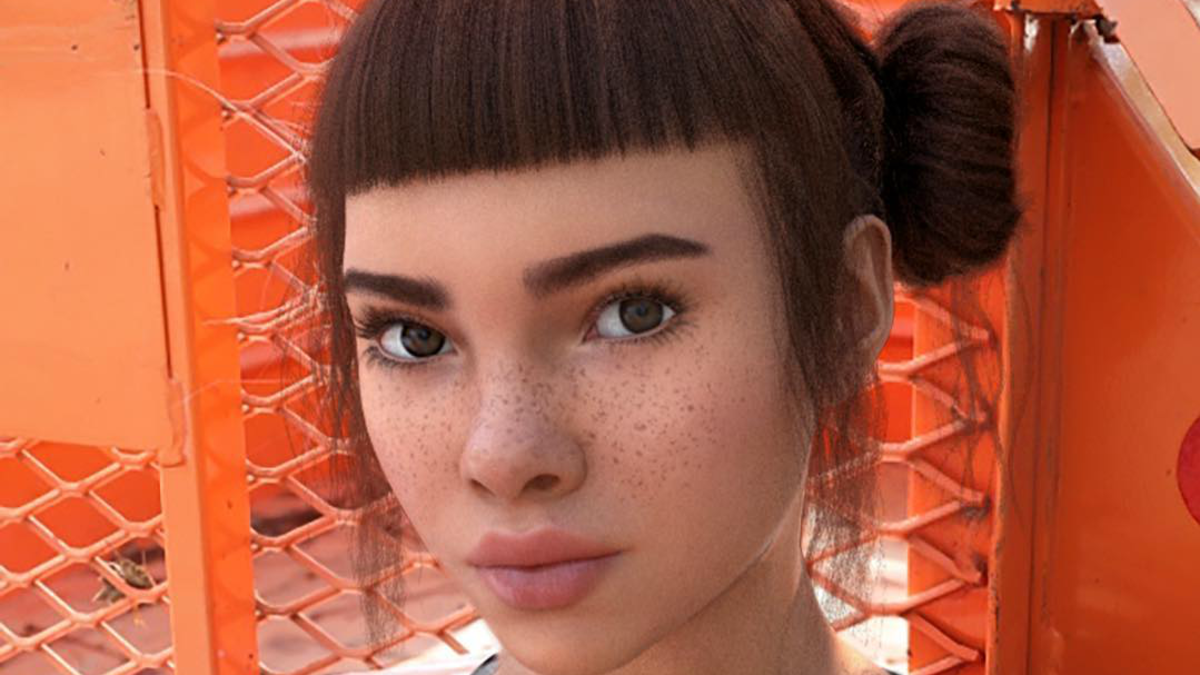Questioning the authenticity of influencers is nothing new. But what happens when the influencer is really not real? That’s right, virtual reality influencers are now a reality.
Meet Miquela Sousa, or @lilmiquela as you may know the 19-year-old Brazilian-American. We make the assumption you may know her because she has more than 1.2 million Instagram followers, has appeared on magazine covers, works with luxury brands like Prada, has three singles on Spotify and iTunes, and is often adorned in outfits real human fashion bloggers would probably kill for.
She wears Chanel, Supreme, and Vetements to the coolest eateries in Hollywood with other, real human influencers, all the while campaigning for social equality and encouraging her followers to donate to the causes she champions. Her friend, Ronnie Blawko – @blawko22 – is equally as progressive, stylish and Gen Z with his 50,000-and-counting following.
They are both the work of Los Angeles artificial intelligence and robotic company Brud, which denies also being behind the influencers’ frenemie, the Trump-supporting and one-time-hacker, @Bermudaisbae.
Then there is Noonoouri, who walks the runway for Chanel, does Insta takeovers for Dior, showcases the latest model Fiat by driving it herself, and counts Naomi Campbell amongst her followers.
The emergence of these characters in the influencer scene has confused, inspired – and equally scared – industry commentators. Most of whom aren’t sure what to make of the Black Mirror-esque goings ons. As one Inquirer writer asked, “Is this the future? What’s happening?”
Fashion Photographer Cameron-James Wilson told Harper’s Bazaar journalist Divya Bala how his own creation, Shudu, provides an opportunity for “digital selves to surpass our physical selves”. Described as “the world’s first digital supermodel”, Shudu has 123,000-plus followers. “I love this idea because in 3D we can be anyone. We can leave behind all the labels we’re born with and create our own,” Wilson says.
Okay, so there is merit in the artistic expression – and it is not entirely surprising for the curators and creators of artistic expression, the fashion industry, to experiment with something new like this. But some marketing and business experts say this new generation of influencers raises some hefty ethical questions. CNN reporter Kaya Yurif looked into the matter and found it to be unclear if brands were paying Brud for partnerships. However, in at least one case – Miquila’s collab with Highsnobiety on a shirt – the company was.
Yurif asked: “The concept of advertising via CGI influencers raises questions: How can they promote products they can’t try? Should companies and brands be transparent about creating or using virtual influencers?” Columbia Business School marketing professor Olivier Toubia said in the article, “There’s room for consumers to be confused – and this should be [remedied]. “Influencers should have a transparent relationship with their followers about sponsorship deals, and it should be clear who is real and who is not real.”
Likewise, Syracuse University’s Newhouse School social media professor Jennifer Grygiel told CNN: “It’s not obvious [she’s a CGI], and it’s not obvious on the post level. “When I was growing up, at least we knew Barbie was a doll. For over two years now, there could be people, teenagers especially, who thought [Miquela] maybe was a person,” she said in reference to Miquela only confirming she was a robot recently. “We need the brands to disclose. We also need these companies to help so they’re not facilitating and participating in this mass deception.”
However, others liken the CGIs to mannequins or even surgically enhanced models and influencers – Kylie Jenner’s infamous Lip Kits, for example, do not give you Jenner’s infamously (no longer) lip-fillered lips. Plus, no matter the Instagrammer’s basis in reality – their followings are as real as Jenner’s: And that’s the key ingredient to any influencer partnership. As long as the relationships between brands and influencers are transparent, and audiences are engaged by the new and exciting content – what’s the harm in a little bit of experimentation?


By leaving a comment you agree with the storage and handling of your data by this website. You can learn more about how we handle you comment information in our Privacy Policy. We are using Akismet to reduce comment spam. Learn how they process your comment data.